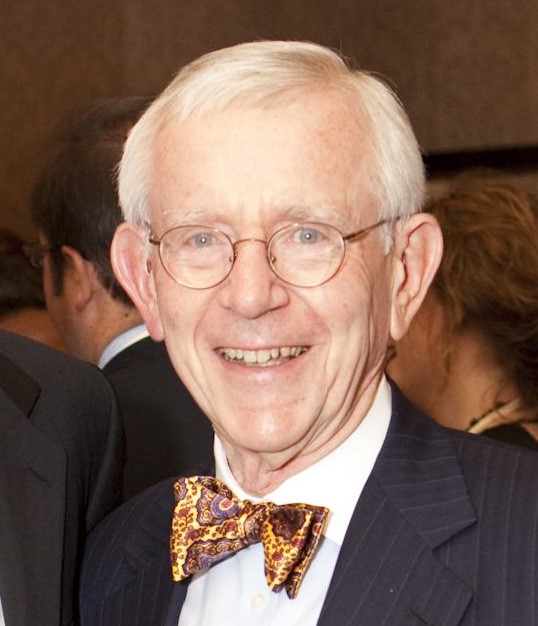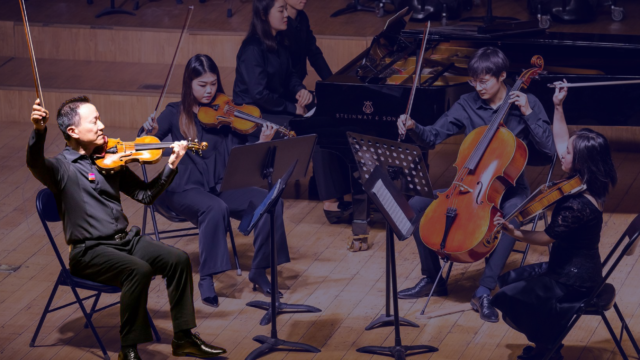Spotlight: Lowell Noteboom
May 2023

Lowell Noteboom is a Partner at Stinson Leonard Street LLP. He is also a Member and Former Chair of the Board of Directors of The Saint Paul Chamber Orchestra.
How did you initially become passionate about orchestras? What was your first introduction?
We’ve always loved classical music, and after moving to the Twin Cities in 1971 we developed an affection for the St. Paul Chamber Orchestra. We loved going to concerts. As our young children were growing up, we enrolled them in the local community music schools—they studied piano, cello and violin. I served on the Board of the Community Music School here in town for 9 years, which was then called MacPhail Center for the Arts, and I went on to chair that Board for several years. I had the opportunity to meet folks in the community who became my friends who were themselves on the board of the St. Paul Chamber Orchestra. They invited me to join that board, which I did in 1997. I served on that board for 20 years, chaired it for seven, and got very actively involved with that orchestra in all that it was doing.
How did you learn about the League?
I learned about the League through my work at the St. Paul Chamber Orchestra. In those days it was called the American Symphony Orchestra League. And because I was very interested in governance, I got invited by Polly Kahn to participate in one of the early orchestra leadership academy programs that was being held at Jiminy Peak, which was a ski resort in the Berkshires. I think it was at Jiminy Peak that I first met Chuck Olton who at that time was the CEO of the League. I became involved in some of the League’s programs, but was not yet a board member. During this time, we recruited Bruce Coppock from the League to lead the SPCO. After Bruce came on board, I quickly became board chair. Bruce told me about the League, and as they say, the rest is history.
What do you think are the most urgent, pressing challenges for orchestras nationally?
I’m not as close to the action as I used to be, but if I were to start with the challenges, I think post-pandemic we need to try to find our audiences where they are, both physically and emotionally. And that means we need to keep on streaming; it means we need to make it as comfortable and as convenient as possible for them to join us in the hall. It means we need to be diverse in our programming. I mean, doing things the same old way and expecting a different result is the definition of insanity. There are certain things about our traditions that are wonderful and need to be preserved, but we need much greater flexibility in everything that we do—where we do it and how we do it. As an example, doing a concert earlier in the evening, not having an intermission, letting people out earlier, etc. Something as simple as the duration and timing of the concert can make a huge difference in terms of how compatible it is with the rest of the demands in people’s lives. It means giving people more choices on how to conveniently interact with us.
We need to try to find our audiences where they are, both physically and emotionally.
As it relates to youth and music education, we should certainly lobby our school boards, but we should also be working cooperatively with existing music institutions—as examples, Settlement Music School in Philadelphia and the Merit School and Old Town School in Chicago. So if we don’t have music in the public schools, and as orchestras we want to try to be part of making a difference, we need to find more ways to collaborate with these organizations to provide music education to the young people in our communities. Here at home, the St. Paul Chamber Orchestra and the Minnesota Orchestra collaborates with the MacPhail Center for Music—one of the largest and best community music schools in the country. There should be many more of these kinds of collaborations.
What do you think League does that creates the most value for our members?
In its earliest years, the League tended to be a place largely focused on helping orchestra staff members with ongoing training, a place where they could interact with each other, collaborate with each other, learn from each other, learn together in other settings. That, in my view, continues to be an absolutely essential portion of what we do. What we have come to do better and more extensively, and where I focused a lot of my energy, is also providing resources to and training board members of orchestras. Trustees of orchestras were often overlooked by the League as it focused on professionals. And I’ve always been committed to the whole process of nonprofit governance, and trying to do it more intentionally and more professionally. And I think this does two things for the League: First, it allows us to serve another essential component of the orchestra family. And second, it puts the League in a position where we are simply better known and understood by orchestra board members, because they understand what the League is and its impact. Now, many of the League’s major believers and supporters are Trustees.
Any final words?
For those of us who serve the League as volunteers, the two biggest pieces of payback that we all receive are the rewards and satisfaction of having made a real difference for something that we care deeply about – and the great friends that we’ve made along the way.
We all receive…the rewards and satisfaction of having made a real difference for something that we care deeply about – and the great friends that we’ve made along the way.
Related
-
Executive Leadership & Management
Emerging Leaders Program
Become a member
Thank you for your interest in the League of American Orchestras! We are dedicated to advancing the orchestral experience for all.
Join Now


